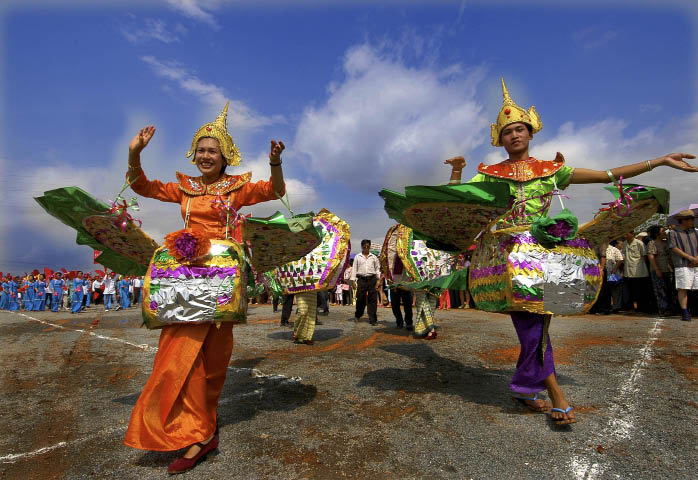Peacock Dance
By staff reporter XING WEN
CHINESE folk dance is a microcosm of the country's rich culture. The Peacock dance of the Dai ethnic group is one of the most traditional folk dances in China.
The presence of the Dai was first recorded in Han books in the first century. This ethnic group is mainly found in Yunnan in southwest China, the province known as the "land of eternal spring." It has its own language, calendar and medical science. Though being in a border area, the Dai people have always maintained contact with the heartland economy and culture.
They are well-known for their dancing and singing skills. As early as 2,000 years ago, the Dai's folk arts reached a high level of sophistication. In the Eastern Han Dynasty (25-220), the central government often invited Dai artists to teach dance, acrobatics and magic in Luoyang – the country's capital at that time.
More than 300 kinds of dances have been passed down. The Peacock dance is the most famous one and represents Dai wisdom and high artistry.
The primitive tropical forests of the province are the peacock's habitat. The bird is sacred in Hinayana Buddhism, the predominant religion of Dai people and one that has shaped their culture, customs and daily life. In illustrated Buddhist scripture, some Bodhisattvas are mounted on peacocks, holding lotus and peacock tail feathers as talismans. Peacock feathers are also often used in purification ceremonies. In the eyes of Dai people, the peacock symbolizes beauty and peace, and is considered generally to be a good omen.
It is said that 1,000 years ago, the head of the Dai ethnic group once saw a beautiful peacock dancing by the riverside. He couldn't help imitating the peacock's graceful poses and gradually formed them into a dance.
The dance soon became popular and developed into the Peacock dance as we know it today. Loving peacocks, Dai people loved the dance as well and passed it down from generation to generation.
Of all the folk dances done by the Dai ethnic group, the Peacock dance is the favorite. Dai people know well the peacock's habits, and they incorporate their observations into the choreography. The dances tell stories that are derived from Buddhist scripture, folklore and fairy tales.
|

|
|
Peacock dance performed at the Water Splashing Festival. Uncredited photos by CFP |
